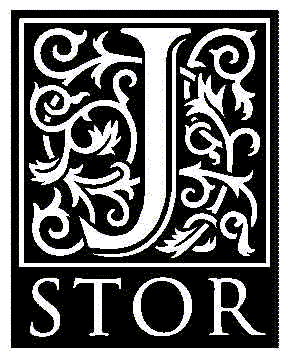Readings in Cultural Geography, edited Philip L.
Wagner and Marvin W. Mikesell; 589 pages; $8.50; The University of Chicago
Press, 1962.
reviewed by Clifford Geertz
Book Review, in: American
Scientist, vol. 51, no. 1 (March 1963), p. 64.
Rather like anthropology, geography has traditionally held a somewhat ambiguous
position within the academic table of organization, spreading itself across
aspects of both the natural and social sciences. The steadily increased interest
in "cultural geography" in recent years is, in turn, a response to the
recognition that while the natural science side of the discipline has advanced
steadily in technical sophistication, the social science side has rather lagged.
Wagner and Mikesell's superb Reader makes it clear that this is rapidly ceasing
to be the case and that, indeed, it is precisely in those areas where geography
overlaps with sociology, economics, anthropology, and even
psychology that some of the greatest intellectual ferment in the field is
now occurring.
The editors divide their book into four major sections: "Orientation," concerncd
primarily with the definition of cultural geography as a sub-field within the
science as a whole; "Cultural Areas and Distributions," concerned with the
spatial dimensions of cultural similarity and difference; "Cultural Origins and
Dispersais," concerned with setting diffusion, migration, evolution, and other
processes of cultural change against the background of environmental realities;
and "Landscape and Ecology," concerned with more functional analyses of the
systematic interaction between environmental and social forces. Altogether,
thirty-four selections are included, all but two presented in unabridged form,
several of them translations of valuable, rather inaccessible essays in German,
French, Swedish, Portuguese, and Italian. Each section is introduced by a
substantial analytic essay written by the editors, giving the book much more
unity and coherence than such readers commonly have. There is a full index.
Perhaps not all the articles fall properly uuder the "cultural geography"
rubric, even as most broadly defined, but all contribute to a clarification of
its conceptual and/or methodological Problems. This is an immensely valuable
collection, not only for teaching purposes, but for those, inside and outside
the field itself, who wish to gain an over-all picture of the directions in
which the more sociological sort of geography is moving.—Clifford Geertz
online source:
https://www.jstor.org/stable/27838629
JSTOR's Terms and Conditions of Use provides,
in part, that unless you have obtained prior permission, you may not
download an entire issue of a journal or multiple copies of articles,
and you may use content in the JSTOR archive only for your personal,
non-commercial use.
Journal of the American Oriental Society is currently
published by the American Oriental Society. Please contact the
publisher regarding any further use of this work. Publisher contact
information may be obtained at
http://www.jstor.org/journals/sup.html.
Each copy of any part of a JSTOR
transmission must contain the same copyright notice that appears on the
screen or printed page of such transmission.

Using this text is also subject to the general
HyperGeertz-Copyright-regulations
based on the Austrian copyright-law (“Urheberrechtsgesetz 1936”, version
2018, par. 40h, par. 42), which - in short - allow a personal, nonprofit
& educational (all must apply) use of material stored in data bases,
including a restricted redistribution of such material, if this is also
for nonprofit purposes and restricted to a specific scientific community
(both must apply), and if full and accurate attribution to the author,
original source and date of publication, web location(s) or originating
list(s) is given ("fair-use-restriction"). Any other use transgressing
this restriction is subject to a direct agreement between a subsequent
user and the holder of the original copyright(s) as indicated by the
source(s). HyperGeertz@WorldCatalogue cannot be held responsible for any
neglection of these regulations and will impose such a responsibility on
any unlawful user.
Each copy of any part of a transmission of a HyperGeertz-Text must
therefore contain this same copyright notice as it appears on the screen
or printed page of such transmission, including any specific copyright
notice as indicated above by the original copyright holder and/ or the
previous online source(s).
